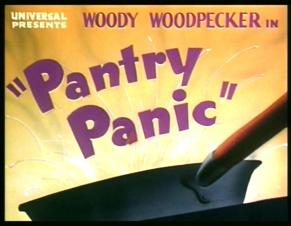kitchen
Do Your Kitchen Cabinets, Fridge, And Desk Drawers Need A Cleanse?
Summer is over. Soon many of us will be stocking our kitchens with Halloween candy and then enough Thanksgiving food to feed hordes of Pilgrims. It might be time to take stock of what’s leftover from the lazy days of summer eating.
Are there leftovers from your Labor Day barbecue, a random piece of birthday cake, ice cream containers with just a little bit left, an open bag of mini chocolate chips in case you decide to bake some cookies? Do you really need the gigantic box of cereal from Costco or the two extra jars of peanut butter that were on sale? Do you have some mini candy bars tucked in the corner of your desk?
Hey, we’re all guilty of storing food in preparation for the next blackout or surprise onslaught of family. The problem is that the extra food is not conducive to managing anyone’s weight. Why? Because usually if it’s there, someone will eventually eat it, whether they’re hungry or not. And, usually the kind of food that’s hanging around isn’t picked fresh from the garden – most likely it’s processed and/or fatty, salty and sweet.
The Kitchen Cleanse
Take a look in your fridge, your cupboards, your desk, and kitchen drawers. What’s in there? Why did you buy it and when? Do you really need it – or does it call your name when you really don’t want to eat but can’t escape the pull of the food that’s all too available.
You might want think about what prompts you to buy large quantities of food that tempts you and that you really don’t need to eat. Knowing why you buy is key to developing some good shopping habits. Doing a “cleanse” of your cupboards, the fridge, and drawers to get rid of what tempts you is a good way to prevent gorging — or even nibbling — on hundreds of excess and probably unhealthy calories. Remember: See It = Eat It.
Ouch, I Cut Myself: 5 Knife Safety Tips
 Do your hands look like they’ve been holding onto barbed wire after a weekend filled with some heavy-duty cooking? From Chow and Jeffrey Elliot, coauthor of the Complete Book of Knife Skills, here are five knife safety tips to help your hands ready for a hand lotion commercial rather than one for antiseptic and bandaids.
Do your hands look like they’ve been holding onto barbed wire after a weekend filled with some heavy-duty cooking? From Chow and Jeffrey Elliot, coauthor of the Complete Book of Knife Skills, here are five knife safety tips to help your hands ready for a hand lotion commercial rather than one for antiseptic and bandaids.
Five Tips:
- Don’t wear jewelry in the kitchen – your knife can get caught on a ring or its handle hung up in a bracelet.
- Make sure your knife is visible – how many times have you tossed it into the sink where it gets covered up by dirty dishes and pots and pans? You don’t know who is going to reach into the sink — stick a hand in and whoops!!!
- Don’t walk around your kitchen with a knife in your hand. If you do — don’t hold it in your dominant hand because if you slip and start to fall the tendency is to reach out to grab onto something or to break your fall with that hand. Bad news if you have a sharp knife in it. Hold it in your less dominant hand with the point down and the blade facing backwards.
- When you hand a knife to someone it should be presented with the handle facing him or her so the handle can be grabbed. The best way to hand off a knife is to put it down with the handle facing toward the other person. If you can’t put the knife down, still offer it to the other person with the handle of the knife, not the blade, facing him or her.
- Make sure your knife is sharp. A dull knife is a dangerous knife because your have to force it through food. A sharp knife cuts cleanly and safely.
Is Your Cooking Costing You Money?
 I thought I knew a lot about efficient cooking, but some of this info surprised me. It seems that my family is throwing more bucks at the electric company than we might have to. In the spirit of the greening up – yea, it’s Spring – here’s some great tips for more efficient cooking.
I thought I knew a lot about efficient cooking, but some of this info surprised me. It seems that my family is throwing more bucks at the electric company than we might have to. In the spirit of the greening up – yea, it’s Spring – here’s some great tips for more efficient cooking.
Easy Ways To Save Some Money In The Kitchen
The easiest and most effective way to save money is to use energy-efficient cooking methods. Here’s how:
The Stove:
- Make sure you match the size of the pot to the size of the burner. On an electric stove using a 6 inch pot on an 8 inch burner wastes more than 40 percent of the heat from the burner.
- Cover your pots and pans with tight-fitting lids during cooking to keep the heat in. A covered pot comes to a boil more quickly which reduces cooking time, using less energy.
- When you buy pots and pans, look for flat-bottomed cookware that is made out of highly conductive materials like copper or cast iron.
The Oven:
- Ovens are not usually the most efficient way to cook – a microwave is far more efficient (see below).
- Preheating is somewhat prehistoric since many newer ovens heat up very rapidly. Often, preheating is not necessary, although it does depend on the recipe – especially for most baked goods and soufflés.
- Turn the oven off five or ten minutes early, and let dishes finish cooking in the residual heat. (Ditto for food cooked on an electric stove top.).
- Try to keep the oven door shut as much as possible. Every time you open it the temperature drops about 25 degrees.
- Ceramic, glass, and cast iron bakeware retains more heat so things cook more quickly.
- Capitalize on your oven and its heat. Cook more than one thing at a time. If you’re cooking something small, use a toaster oven or microwave to save energy – especially if you’re reheating.
The Microwave:
- Microwave ovens are a very efficient way to heat and cook food. Cooking energy is reduced by as much as 80 percent when you use your microwave for small portions.
- On average, you can reduce your energy consumption by two-thirds if you cook in the microwave rather than on the stove (even if it’s gas). You’ll also help keep the kitchen cooler, a bonus in the summer.
The Pressure Cooker:
- Don’t forget about pressure cookers. They are also highly efficient.
- Because pressure cookers cook food at a higher temperature, they can reduce cooking time by up to 70 percent and energy consumption by as much as 50 to 75 percent.
For more about “green cleaning” check out my latest Eat Out, Eat Well newsletter article at:
What’s In Your Cupboards — And Why Is It There?
Take a look in your fridge and in your cupboards. What’s in there? Why did you buy it and when? Sometimes figuring out what to buy and eat is really tough. Here are a baker’s dozen categories. Which do you fall into most frequently?
1. Are you a bargain shopper looking to get the largest amount of food for your money — so you buy a dozen of what’s on sale or two of the gigantic size at Costco? Check your cupboard or the back of your fridge there still might be some “bargains” left over from two years ago.
2. Do you look for the most calories for your money (supersize me) — the biggest bang for your buck? This often goes hand in hand with #1 above.
3. Do you want the best nutrition for your money so you shop in CSAs (Community Supported Agriculture) or go on the hunt for country farm stands? Do you then end up with so much produce that some of it rots and you have to toss it –- or, you’re so overloaded with kale or spinach that you never want to look at it again?
4. Do you buy only what you want to eat – with no regard to cost, calories, or meal planning of any kind? My guess is that most people in this group are younger than 35.
5. Do you buy food that you think, in the interest of your health or your family’s, that you and/or they should eat? The problem is that a lot of these foods may not be what you want to prepare and what no one wants to eat. The food you and your family like probably disappears quickly and the stuff that no one really likes ends up feeding the garbage pail.
6. Do you buy special or celebratory food because it’s someone’s birthday, or Thanksgiving, or Easter, or Halloween? Do you really buy it because of holiday traditions or because the holiday has given you an excuse to buy – and indulge – in what you ordinarily wouldn’t?
7. How about the food you’ve always wanted to try and you bought on the spur of the moment because you happened to see it in the store. Then you got the food home and realized that you didn’t know how to prepare it or found out that the preparation is way too complicated – or that your spouse or partner really hates it.
8. What about the product of the moment – which might fall into any number of categories. It could be trendy, the latest low-fat wonder, or the cake mix your neighbor said was so good. Maybe it’s good, maybe not.
9. Then there’s the diet foods: the low or no fat, low or no sugar, fiber rich, reduced calorie food you bought in an endless quest for the miracle food that won’t pack on the pounds.
10. What about “nutrition” foods – the ones with claims plastered all over the label that they can prevent or cure just about anything?
11. Or, the convenience foods – the stuff, probably already prepared and/or processed, frozen, or take-out — that you grab when you are totally exhausted or exasperated and you want to get the food on the table and not have anyone complain about it.
12. Let’s not forget the craving foods – the sugar, fat, and salt foods that keep you coming back for more.
13. And, last but not least, the reward foods — the “I’ve had such a tough day” or “I’ve been so good all day” food that almost always packs a whopper of a sugar, fat, and caloric punch.
Sometimes there is a time and place for food from any of these categories. But, if you are a mindful, not mindless, eater you might want to think about the category you land in most frequently.
Did I miss any categories? Please let me know what you think.


